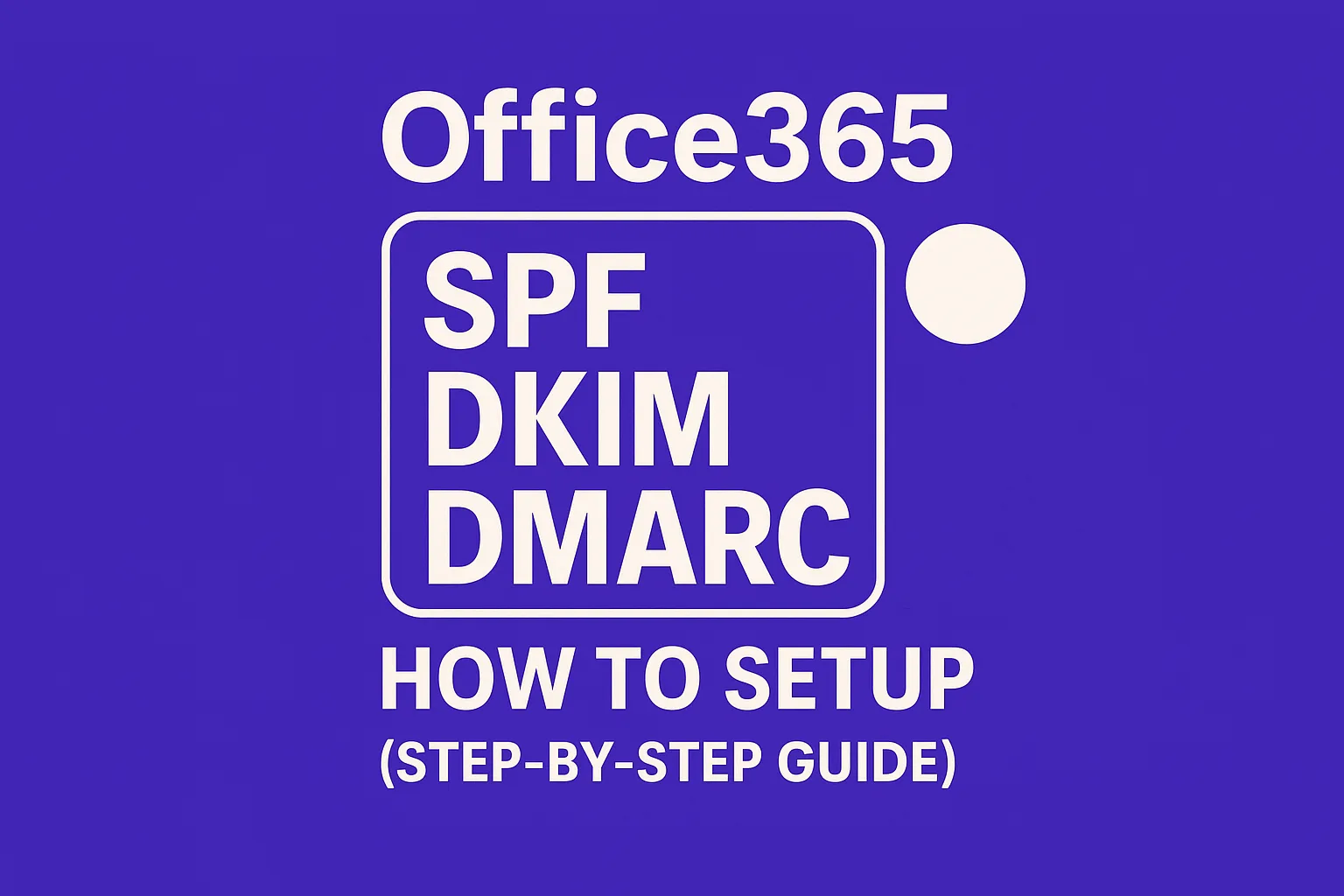Deliverability vs. Delivery: the quick difference
If delivery is the mail truck, deliverability is the front door. Delivery asks, Did the email reach the mailbox?
Deliverability asks, Did it land in the inbox, not the spam folder?
It's possible to achieve 100% delivery and still miss actual inboxes. That knowledge gap frustrates teams and wastes time. Let’s bridge it with clear definitions and actionable steps.
Why this difference matters
Inbox placement determines whether anyone ever sees your message. Spam placement buries it; bounces block it entirely.
For optimal email performance, gaining trust from inbox providers is vital. Indeed, if these providers don’t trust your domain, all other efforts may be in vain.
What drives delivery
Delivery occurs at the transport layer. Your sending server hands the message to the recipient’s server, which can either accept, defer, or reject it.
Core delivery factors
- Correct DNS: MX records must accurately direct mail traffic.
- Healthy SMTP: Avoid broken HELO/EHLO or TLS handshake issues.
- Valid addresses: Reduce typos and minimize bounce rates.
- Reasonable sending limits: Prevent sudden spikes in volume.
- Accurate envelope and headers: Ensure all fields are correctly formatted.
What shapes deliverability
Deliverability is all about trust. Inbox providers evaluate many signals, authentication, sender reputation, and user engagement, to decide where your emails land.
Key deliverability signals
- Domain reputation: Reflects the long-term patterns of your sending behavior.
- IP reputation: Still matters, but domain reputation is even more important now.
- Authentication: Includes proper SPF, DKIM, and DMARC record alignment.
- User interactions: Replies, reading time, and actions such as dragging emails out of spam signal engagement.
- Complaints and spam traps: Even low complaint rates or accidental triggers can damage reputation.
- Consistency: A steady cadence of sends builds inbox provider trust.
The role of warm up in deliverability
Warming up is about earning trust before you send at scale, think of it as training for a marathon. Capacity is built gradually, not all at once.
Tools like Mailwarm simulate positive interactions through a network of over 1,000 active, maintained mailboxes. The system opens emails, sends short replies, pulls messages from spam, and tags them as primary. These actions help create behaviors that inbox providers interpret as legitimate.
Warm up emails serve to technically build your sender reputation. They are not meant for marketing or outreach.
If you launch a new domain or IP, or are resuming operations after a period of inactivity, it’s important to start with an initial warm-up phase. This means gradually ramping up email sending while monitoring deliverability, to avoid any sudden spikes that could harm your sender reputation. Keep the warm-up ongoing as you scale your actual campaigns; steady and positive activity lays the groundwork for inbox trust.
Authentication is non‑negotiable
Authentication is essential: it guarantees that inbox providers know your emails really come from you. Even the best content can miss the inbox without it.
- SPF: Clearly states which servers are allowed to send emails for your domain.
- DKIM: Cryptographically signs your messages so their integrity can be validated.
- DMARC: Brings SPF and DKIM into alignment and sets policies for handling failures.
If you need a refresher, this guide to SPF, DKIM, and DMARC covers why these records matter and how alignment works.
Delivery symptoms vs. deliverability symptoms
- Delivery issues show up as hard bounces, deferred messages, or SMTP errors.
- Deliverability issues appear as spam filtering, unexpected tab placement, or low reply rates from recipients.
To diagnose problems: I start with SMTP logs for delivery and rely on seed testing for deliverability. Keeping these troubleshooting paths distinct makes fixes much clearer.
How to warm up a domain the practical way
- Prepare your domain: Configure and align SPF, DKIM, and DMARC records.
- Start slow: Send small, consistent volumes daily at first.
- Use a warm up tool: Maintain ongoing positive interactions with mailbox networks.
- Ramp steadily: Increase volume only after confirming low spam placement rates.
- Maintain consistency: Keep a stable, regular sending rhythm once scaled up.
A gradual, steady approach reassures inbox providers. Sudden increases in volume are likely to raise filters and trigger suspicion.
Seed testing and real-world checks
Seed lists help you observe how your emails perform across different mailbox providers, while not a mirror image of your real audience, they reveal important trends.
- Test with Gmail, Outlook, Yahoo, and iCloud as a minimum baseline.
- Re-check inbox placement after any changes to DNS or sending patterns.
- Review bounce codes to identify signs of throttling or outright blocking.
- Monitor complaint signal sources like feedback loops when available.
Continue warm-up activity alongside seed testing. While warm-up maintains a positive baseline, seed tests help you spot and respond to changes quickly.
Myths that hurt deliverability
- “100% delivered means we’re fine.” Not true, high spam placement can undermine this.
- “New IP fixes everything.” Domain reputation will follow you.
- “We can scale overnight.” Assuming that scaling overnight is safe could backfire. Sudden volume shifts may be seen as risky behavior by inbox providers.
- “One missing record is okay.” Missing alignment often damages inbox placement.
- “Warm up is a one‑time task.” In reality, it’s a continual process, not a simple checkbox.
Troubleshooting playbook
When you see bounces
- Check the SMTP code. Hard bounces mean addresses should be removed; soft bounces may resolve on their own.
- Inspect whether your sending IP or domain is on key blocklists.
- Correct DNS errors before attempting to resend.
When you land in spam
- Ensure SPF, DKIM, and DMARC records are properly aligned with your From domain.
- Reduce sending volumes if necessary; revert to a lower, more predictable baseline.
- Run an extended warm-up phase while you adjust sending cadence.
- Encourage real user replies, which are powerful positive signals for inbox providers.
Your quick checklist
- MX, SPF, DKIM, and DMARC records are all set up and verified.
- You send at a consistent, predictable daily rhythm.
- Active warm-up is ongoing for your domain and mailbox.
- Seed placement is regularly checked across leading mailbox providers.
- Hard bounces and obvious traps are swiftly removed from your list.
- Email headers are legible, and SMTP handshakes are free of errors.
Delivery is arrival; deliverability is inbox placement. You must achieve both. Start with strong authentication and proper warm-up, then scale up with care and steady cadence. Always monitor placement, not just basic server acceptance.
If you want a sanity check on your setup, or expert help with a tricky deliverability problem, reach out to specialists who manage email performance daily. Consult email deliverability experts at MailAdept for personalized, actionable guidance tailored to your situation.
FAQ
What is the difference between delivery and deliverability in email marketing?
Delivery refers to an email reaching the recipient's server, while deliverability concerns whether the email lands in the inbox or is diverted to spam. Both are crucial for ensuring your messages are actually seen by the audience.
Why is deliverability important for email campaigns?
Deliverability affects the visibility of your emails. If emails are marked as spam or don't enter the inbox, even the best content won't reach your audience effectively.
What factors influence email delivery?
Delivery depends on factors like correct DNS settings, a healthy SMTP setup, valid recipient addresses, and reasonable email sending limits. These technical elements ensure your message is transferred correctly to the recipient's server.
What can improve email deliverability?
To enhance deliverability, focus on building a good domain reputation, setting up proper email authentication like SPF, DKIM, and DMARC, and encouraging user interactions with your emails. Consistent sending patterns also build trust with inbox providers.
Why is email warm-up necessary?
Warming up is crucial for gradually establishing a positive reputation with inbox providers before scaling email volume. It shows that your domain can be trusted to send legitimate emails and minimizes the risk of being marked as spam.
How do you start the email warm-up process?
You should begin by setting up and aligning SPF, DKIM, and DMARC records, then sending small volumes consistently. Using a warm-up tool can help maintain positive interactions and build a good sending reputation over time.
What are common myths about email deliverability?
Some myths include the belief that 100% delivery means success and that acquiring a new IP can resolve all issues. In reality, domain reputation plays a significant role and steady, ongoing efforts are necessary to maintain good deliverability.









